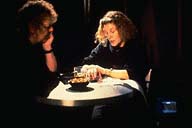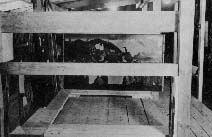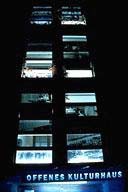

There were eight of us
to start with: Bernie, Jeanne, Joanna, Daniel, Piotr,
Mickey, Alice and me. Most of us have other jobs so we can only do a few hours
here or there, with maybe a longer stretch on weekends.Still, bit by bit the work continues.
Think of it: The elaborate plans, the theft, the trains, the collection points,
the salt mines, the steamer trunks,
the boats, the trucks, the frontiers,
the documents, the endless, detailed documents. List after list after list.
The absence.
Our reconstructions aren't actual copies of the missing works. They're not meant to be.
They just mark a place. It isn't the art that matters.
Bombed, plundered, stolen or lost, the art isn't mine, yours, anyone's. Never was. And now
it's gone. Some works may turn up again, but with most of them we'll never
know what happened.
Here in Linz,
the ground-floor renovations at the
Offenes Kulturhaus include a bar
almost identical to the Transit
Bar where I worked in Toronto. I've been here nearly six months now. It's
hard to remember, now that things have changed so much, how they once were.
But you can still go through the bar to get to the upstairs painting studios,
to the basement, the metal shop, the wine cellar, the office,
or the back staircase.
It makes sense to start in Linz,
reviewing the records, reading the interrogation
reports, considering the evidence. Like love, art is not really enough,
but you
have to start somewhere.
We meet in the bar, even when I'm not on duty. It's good to know that
everything is ready upstairs: The brushes, the crayons,
the paper, the computer, the scanner,
the photographs, the memoirs, the letters, the family accounts, the catalogues,
the lists, the lists, the lists, the lists, the lists, and the lists ....

 Each of us has selected one or two works to reconstruct in some way, our own
fragment of the story. Our Rembrandt is, of course, no Rembrandt; our Goya, no
Goya; our Courbet not Courbet ... and is not meant to be, but a gesture.
I hope you'll understand.
Each of us has selected one or two works to reconstruct in some way, our own
fragment of the story. Our Rembrandt is, of course, no Rembrandt; our Goya, no
Goya; our Courbet not Courbet ... and is not meant to be, but a gesture.
I hope you'll understand.